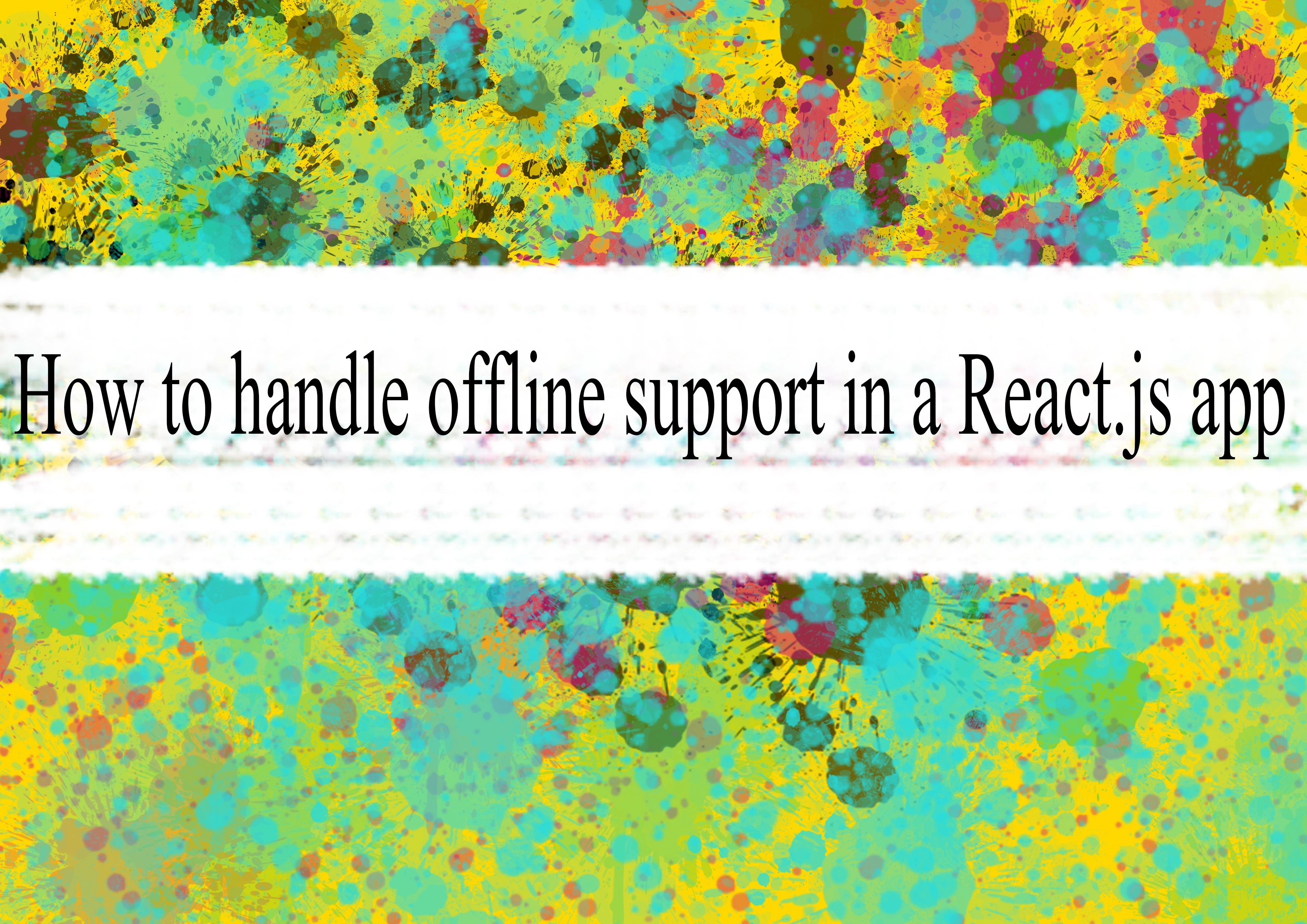How to handle offline support in a React.js app

Handling offline support in a React.js app involves implementing strategies to manage data and functionality when the user's device is not connected to the internet. Here are some general steps and approaches you can follow:
Service Workers:
- Use service workers to enable offline support in your React app. Service workers run in the background and can intercept network requests, allowing you to cache resources and serve them when the device is offline.
- Create a service worker file (e.g.,
service-worker.js) and register it in your main application file usingnavigator.serviceWorker.register().
Create a Manifest File:
- Use a web app manifest file (
manifest.json) to define how your app should behave when installed on the user's device. Include information such as the app's name, icons, and the start URL.
- Use a web app manifest file (
Offline-First Strategy:
- Design your app with an "offline-first" mindset. This means that your app should work even when there is no internet connection, and updates should be synced when the connection is restored.
Cache Resources:
- Use the service worker to cache static assets, such as HTML, CSS, JavaScript, and images, to ensure that your app can still function when offline. You can use tools like Workbox to simplify caching strategies.
javascript// Example using Workbox to precache assets
import { precacheAndRoute } from 'workbox-precaching';
precacheAndRoute(self.__WB_MANIFEST);
- IndexedDB for Data Storage:
- Use IndexedDB or a similar client-side database to store and manage dynamic data when offline. You can use libraries like Dexie.js to simplify the interaction with IndexedDB.
javascript// Example using Dexie.js for IndexedDB
import Dexie from 'dexie';
const db = new Dexie('MyDatabase');
db.version(1).stores({
tasks: '++id, name, completed',
});
// Use db.tasks for CRUD operations on tasks
- Handle Offline Events:
- Listen for online and offline events to update your UI or trigger specific actions when the connection status changes.
javascript// Example event listeners
window.addEventListener('online', () => {
// Handle online event
console.log('Online');
});
window.addEventListener('offline', () => {
// Handle offline event
console.log('Offline');
});
- User Feedback:
- Provide feedback to users about their current online/offline status. You can use the
navigator.onLineproperty to check the connection status.
- Provide feedback to users about their current online/offline status. You can use the
javascript// Example checking online status
const isOnline = navigator.onLine;
console.log(`Online status: ${isOnline ? 'Online' : 'Offline'}`);
- Sync Mechanism:
- Implement a sync mechanism to handle data synchronization when the app transitions from offline to online. This might involve storing offline actions and replaying them when connectivity is restored.
These steps should provide a foundation for adding offline support to your React.js app. Depending on your specific requirements, you may need to adjust and extend these strategies.
-
Popular Post
- How to optimize for Google's About This Result feature for local businesses
- How to implement multi-language support in an Express.js application
- How to handle and optimize for changes in mobile search behavior
- How to handle CORS in a Node.js application
- How to use Vue.js with a UI framework (e.g., Vuetify, Element UI)
- How to configure Laravel Telescope for monitoring and profiling API requests
- How to create a command-line tool using the Commander.js library in Node.js
- How to implement code splitting in a React.js application
- How to use the AWS SDK for Node.js to interact with various AWS services
- How to use the Node.js Stream API for efficient data processing
- How to implement a cookie parser middleware in Node.js
- How to implement WebSockets for real-time communication in React
-
Latest Post
- How to implement a dynamic form with dynamic field styling based on user input in Next.js
- How to create a custom hook for handling user interactions with the browser's device motion in Next.js
- How to create a custom hook for handling user interactions with the browser's battery status in Next.js
- How to implement a dynamic form with dynamic field visibility based on user input in Next.js
- How to implement a dynamic form with real-time collaboration features in Next.js
- How to create a custom hook for handling user interactions with the browser's media devices in Next.js
- How to use the useSWRInfinite hook for paginating data with a custom loading indicator in Next.js
- How to create a custom hook for handling user interactions with the browser's network status in Next.js
- How to create a custom hook for handling user interactions with the browser's location in Next.js
- How to implement a dynamic form with multi-language support in Next.js
- How to create a custom hook for handling user interactions with the browser's ambient light sensor in Next.js
- How to use the useHover hook for creating interactive image zoom effects in Next.js